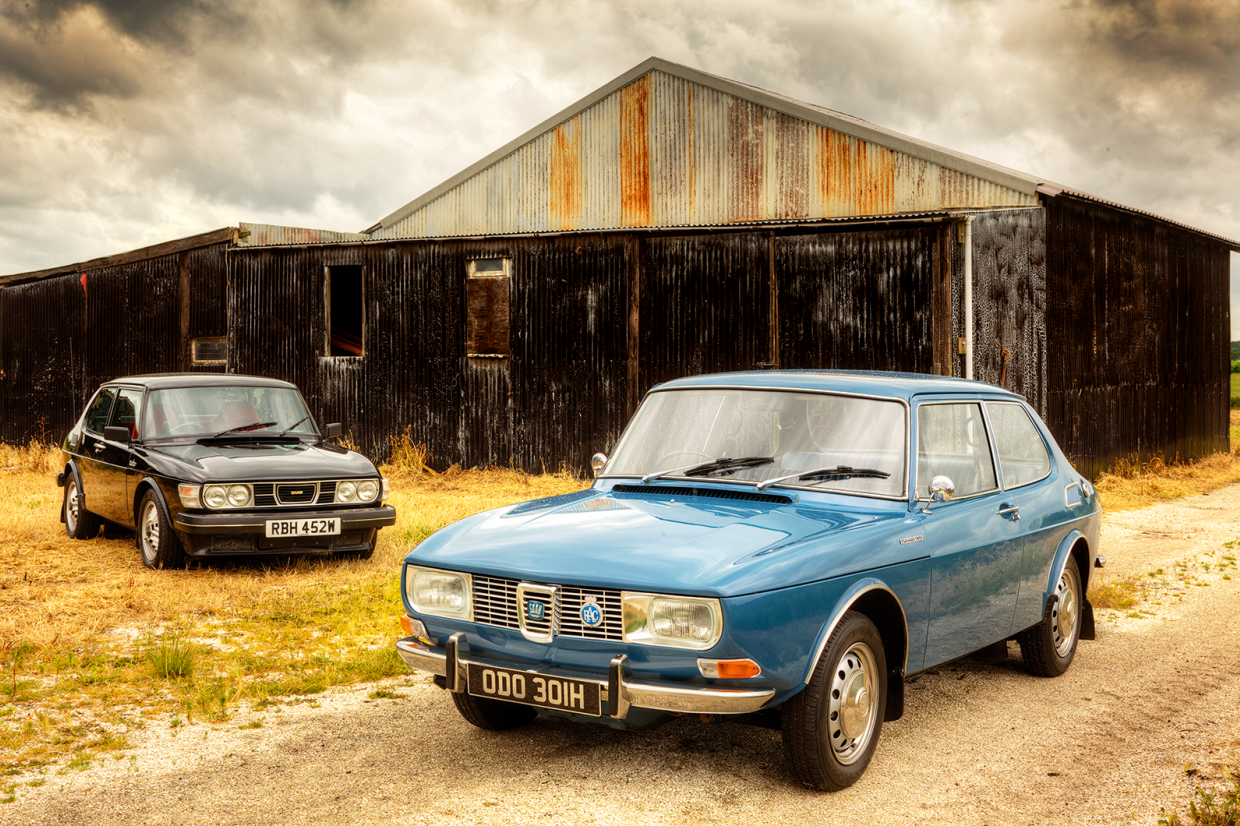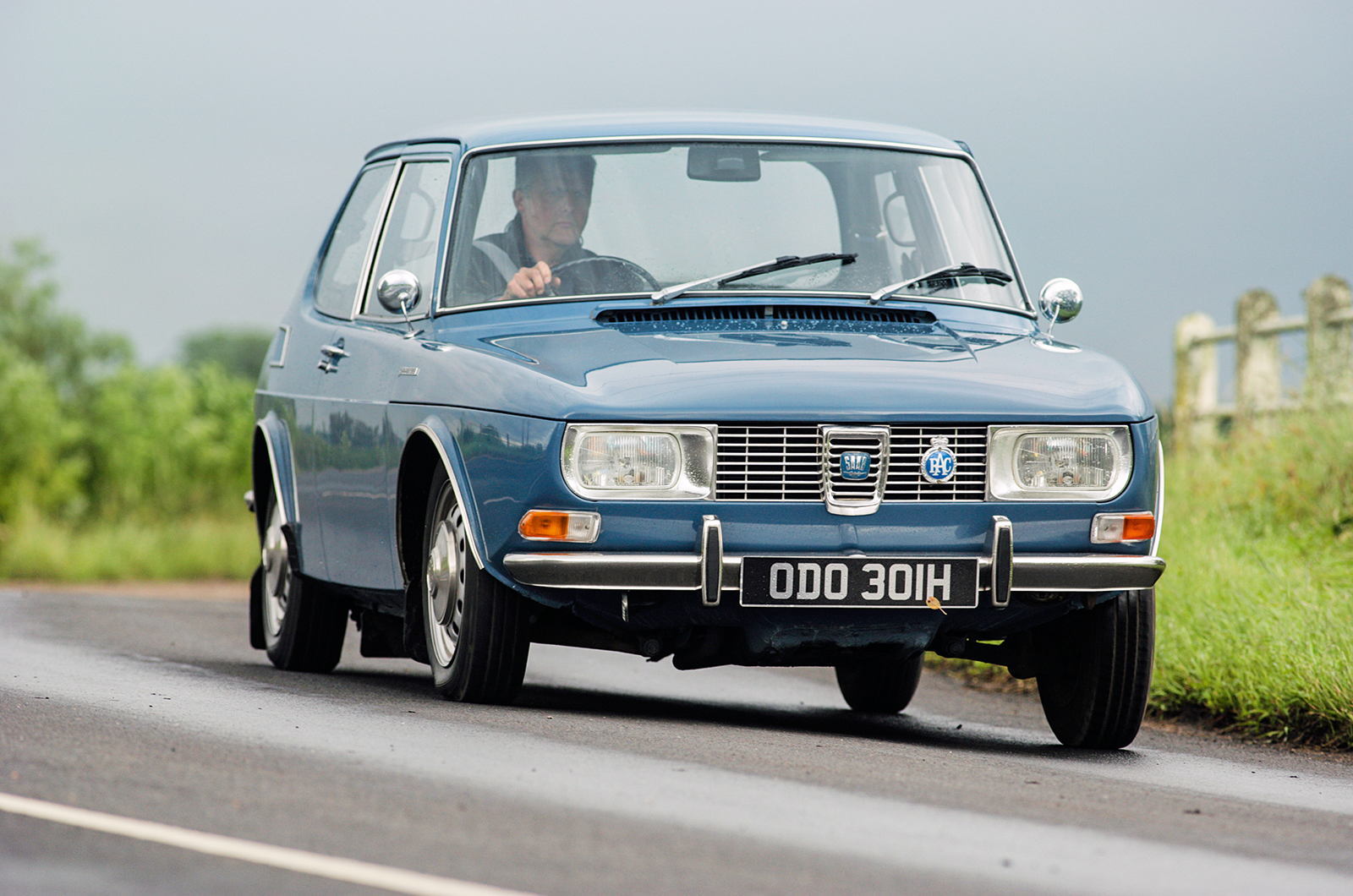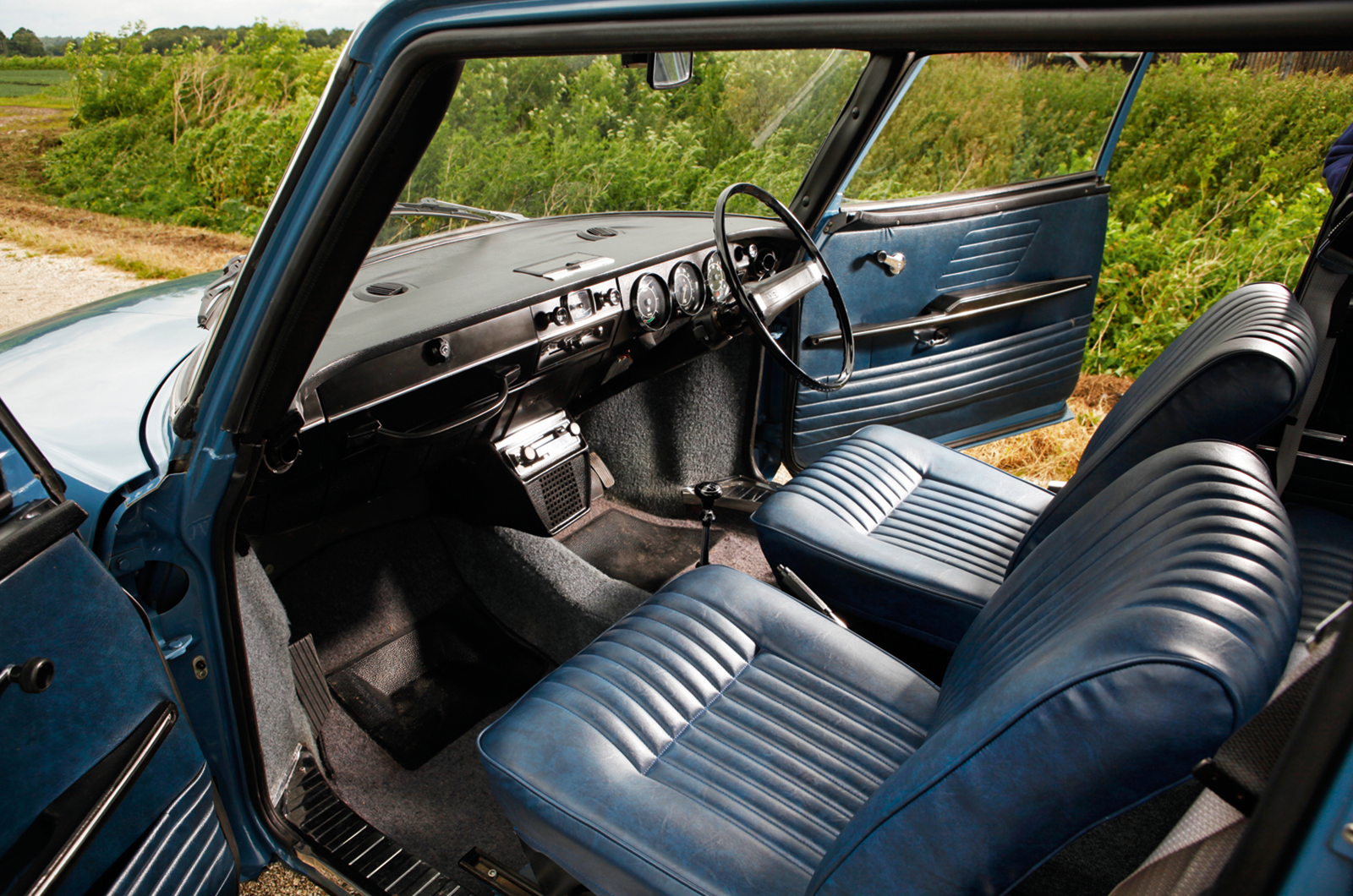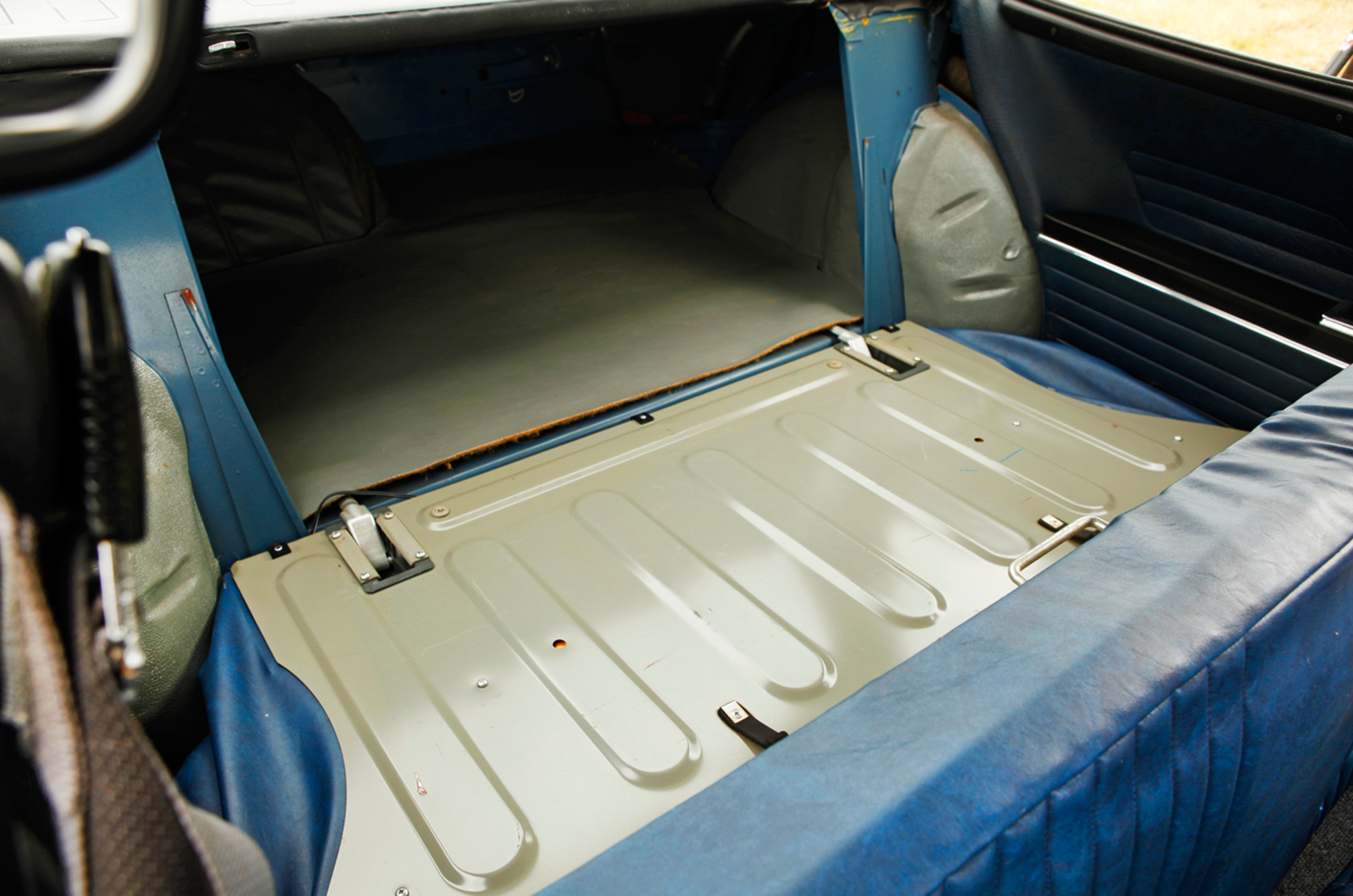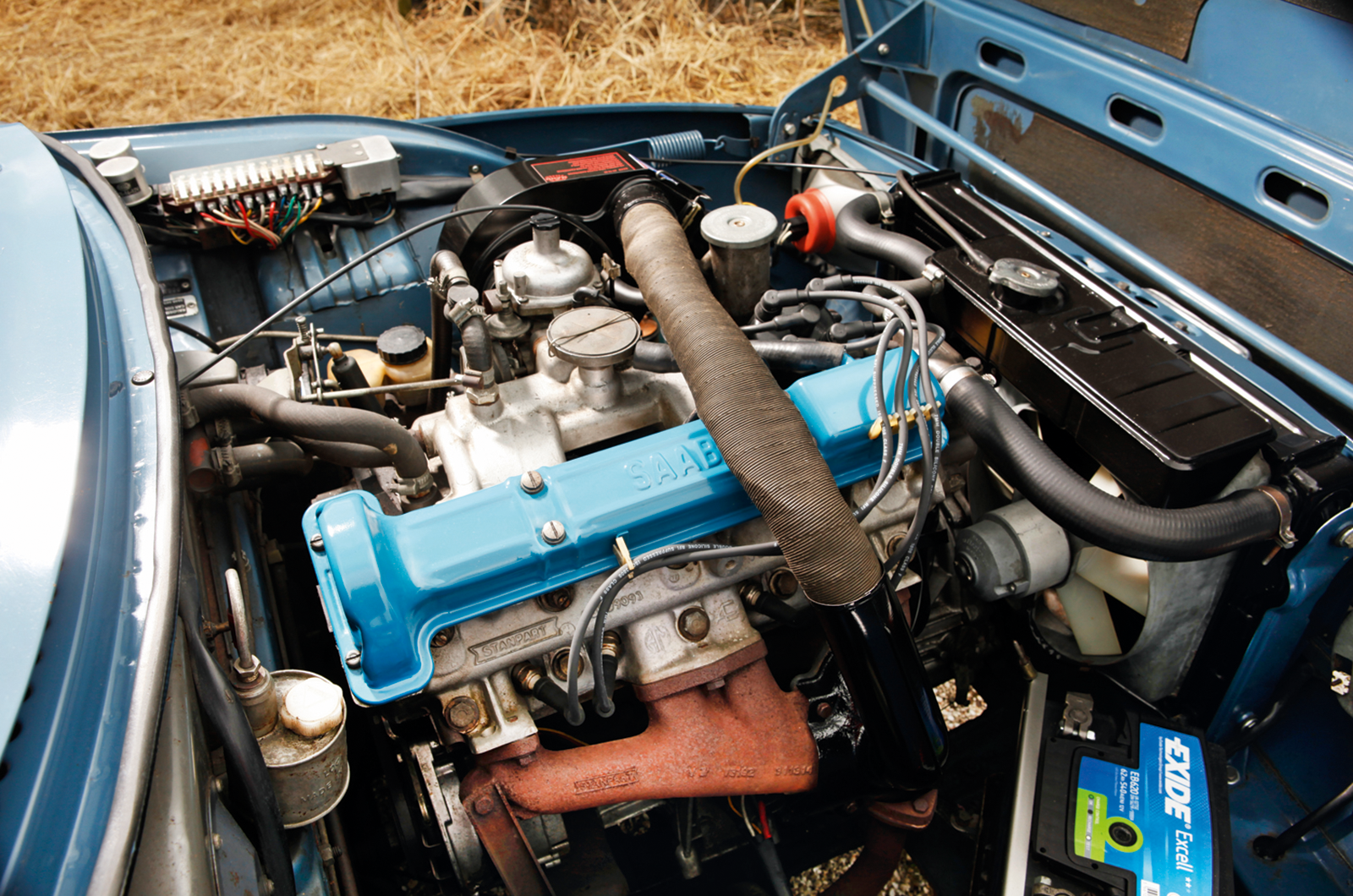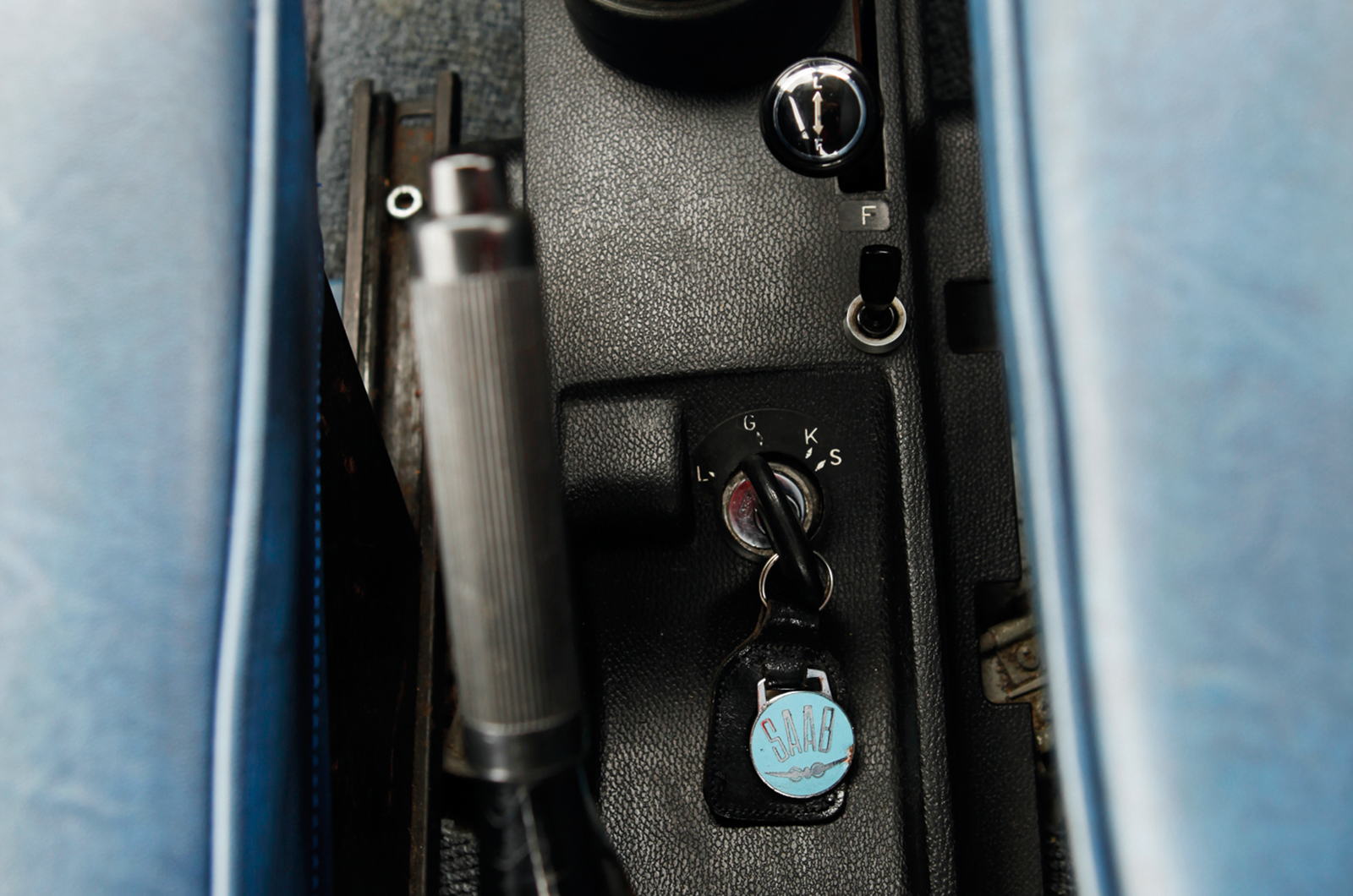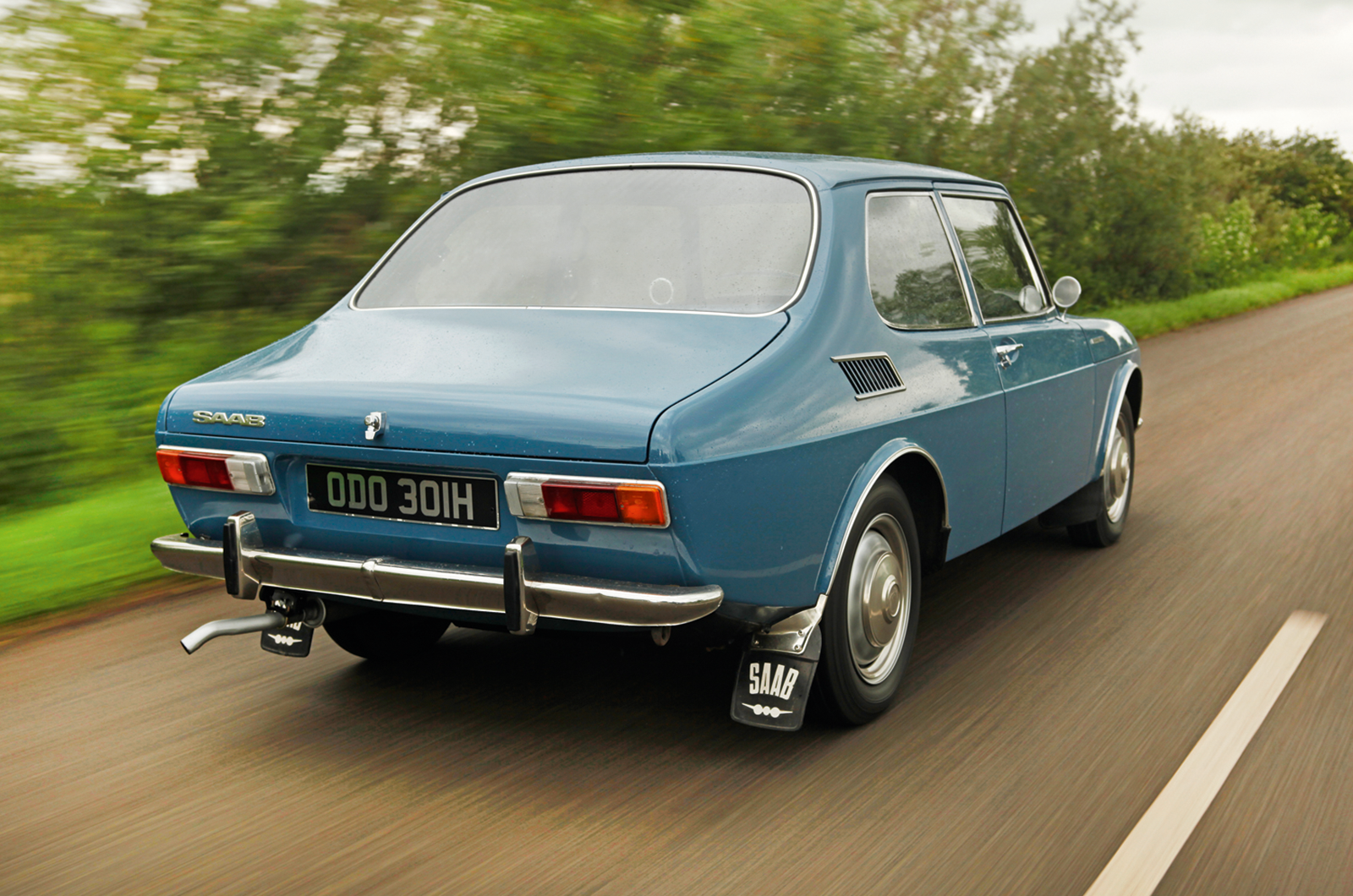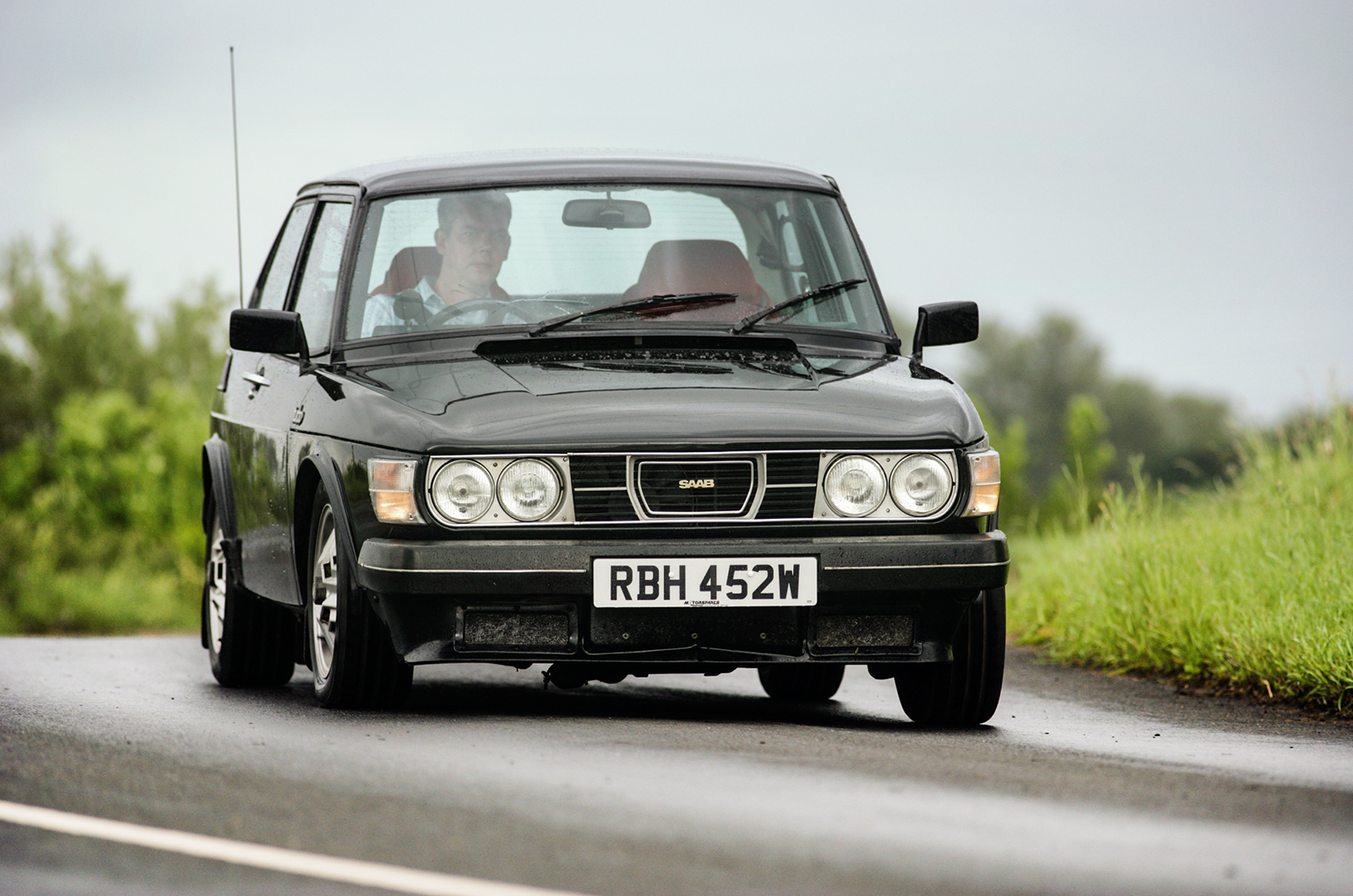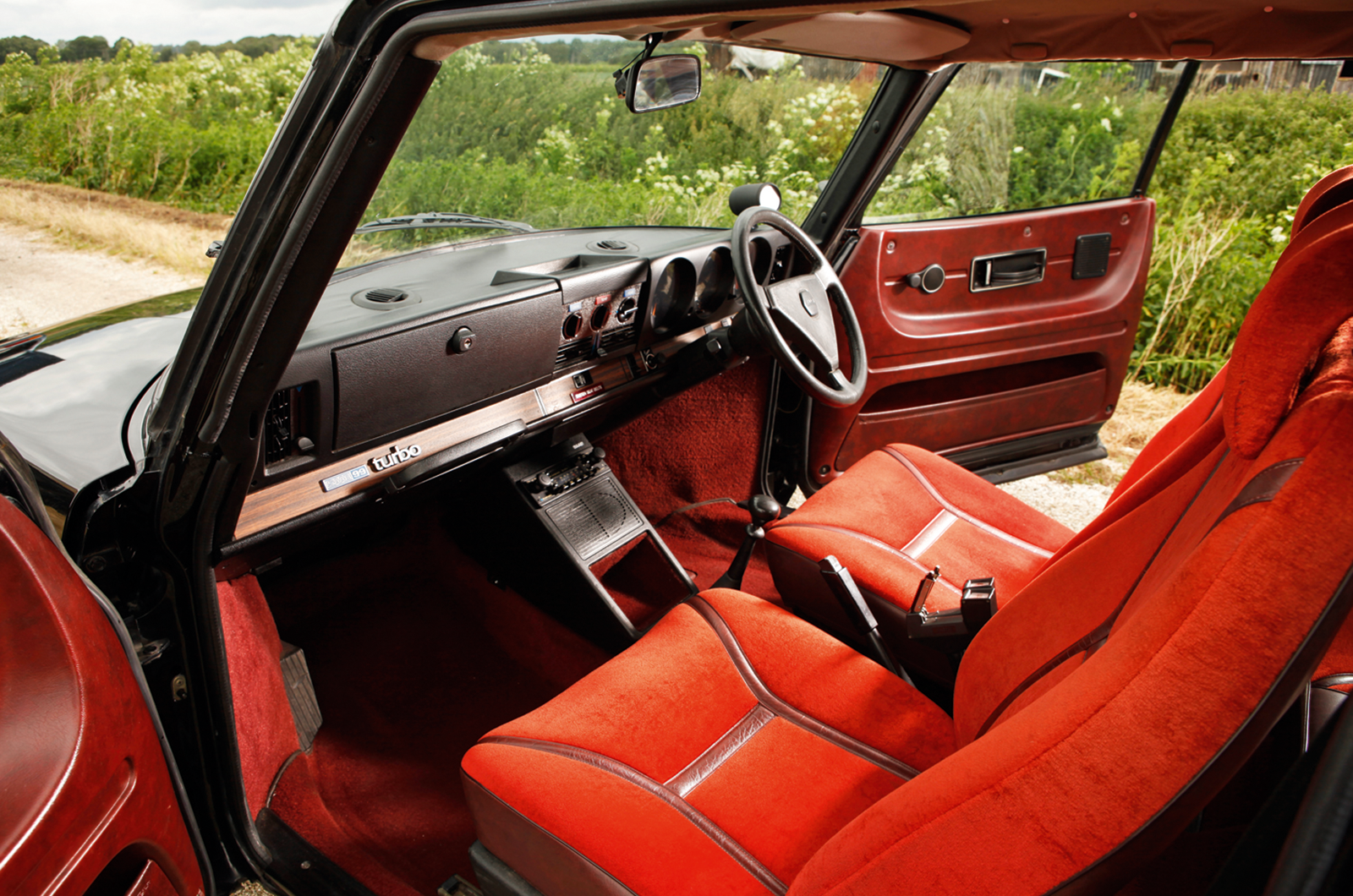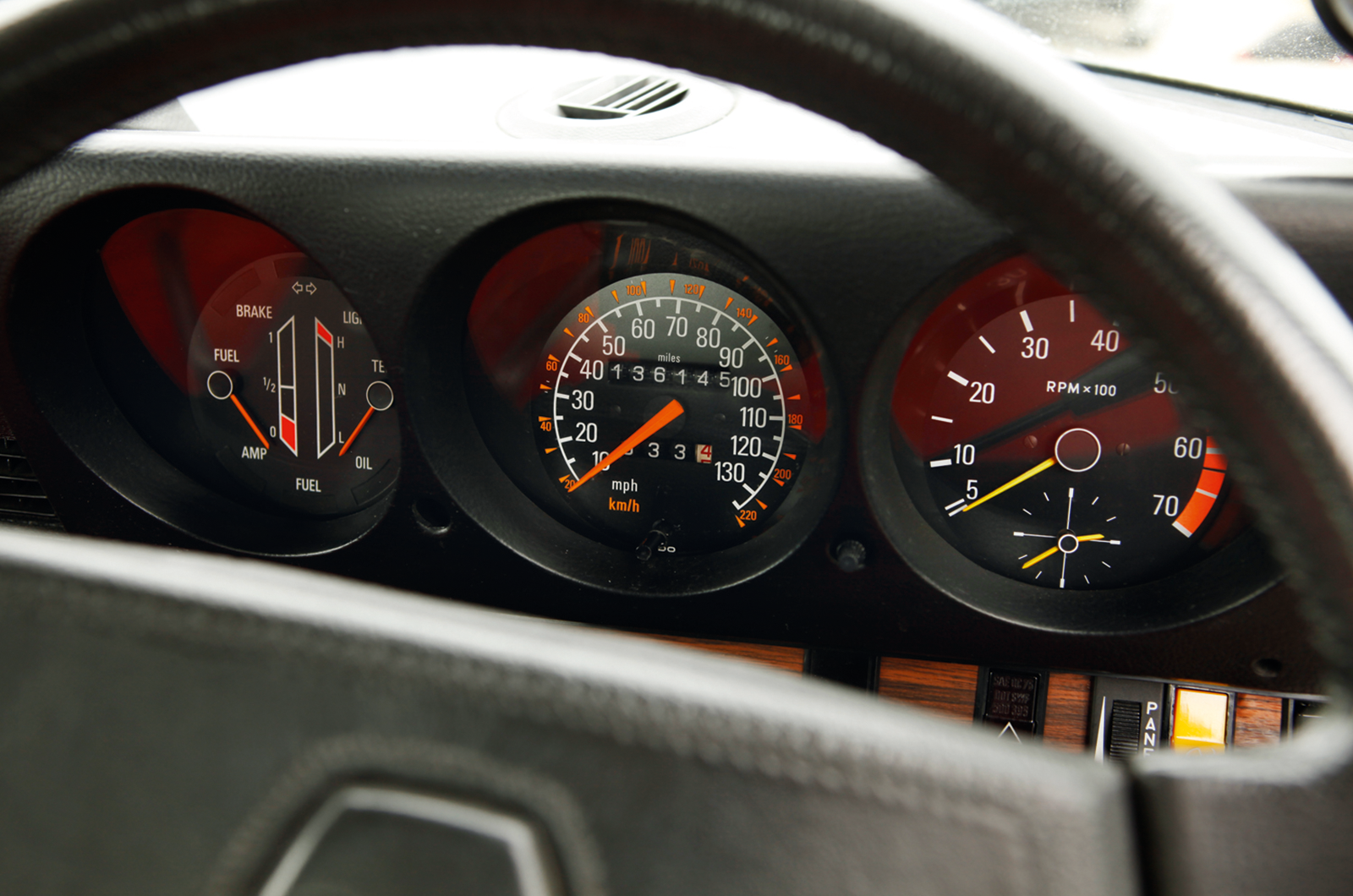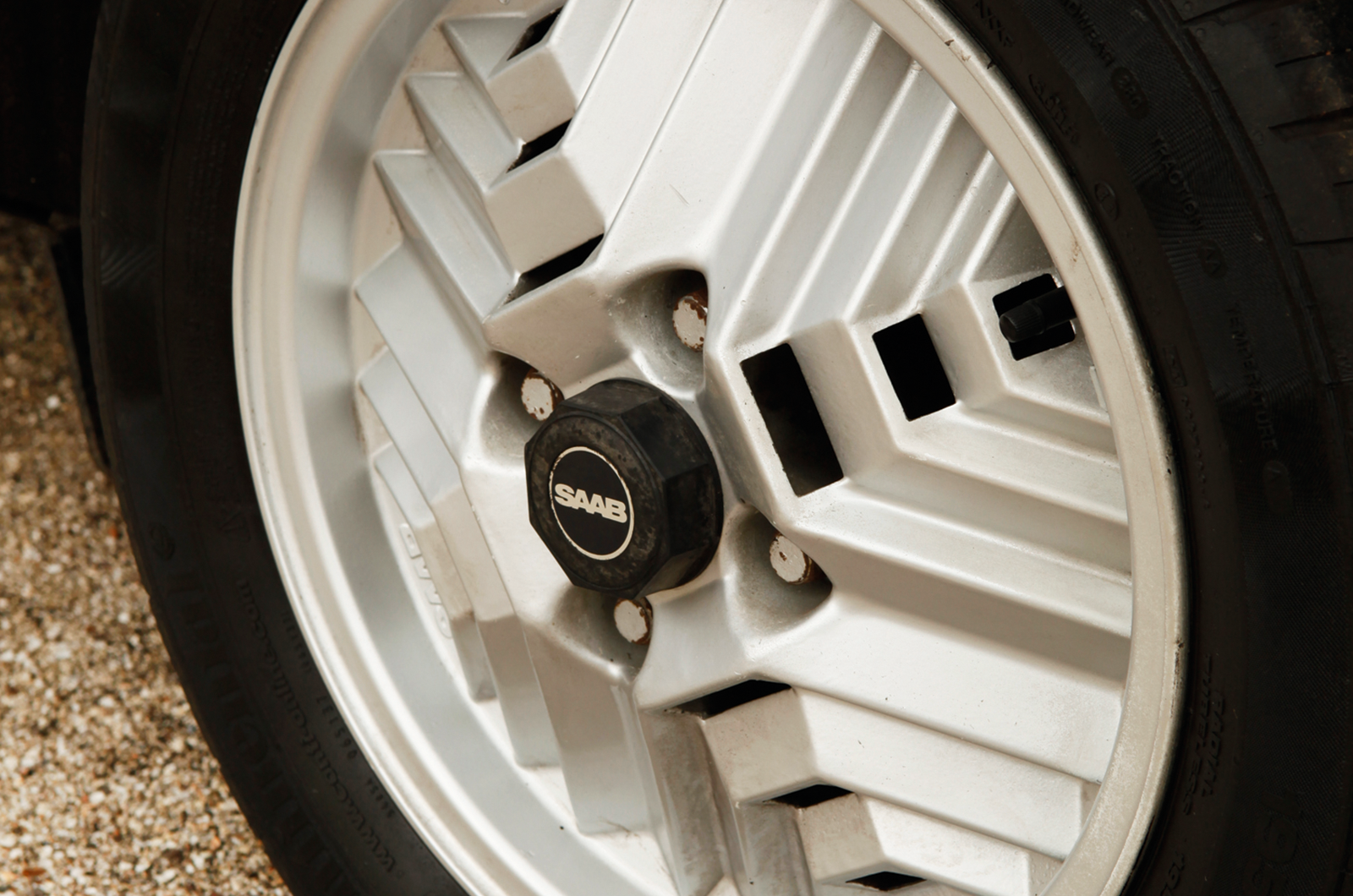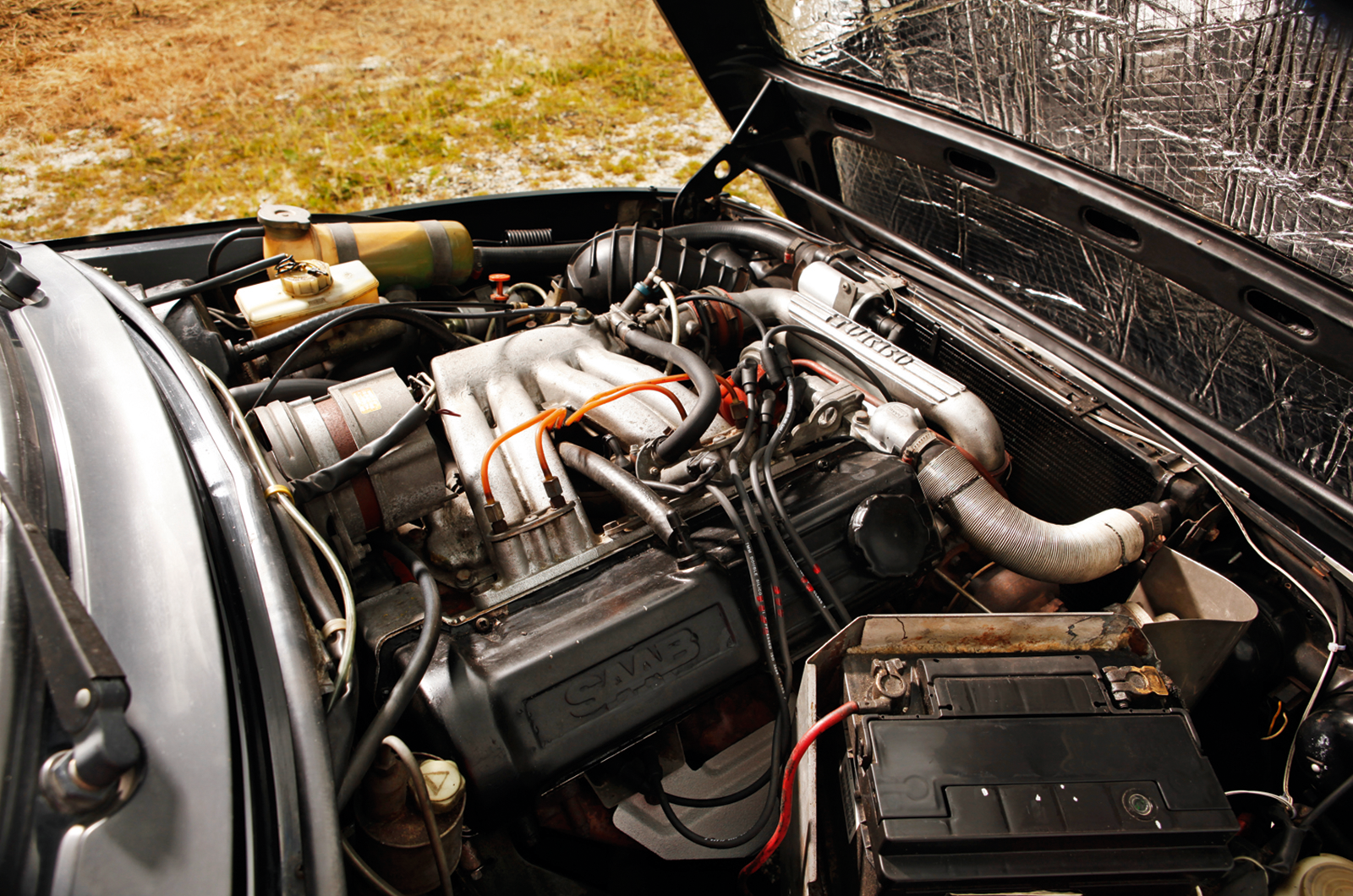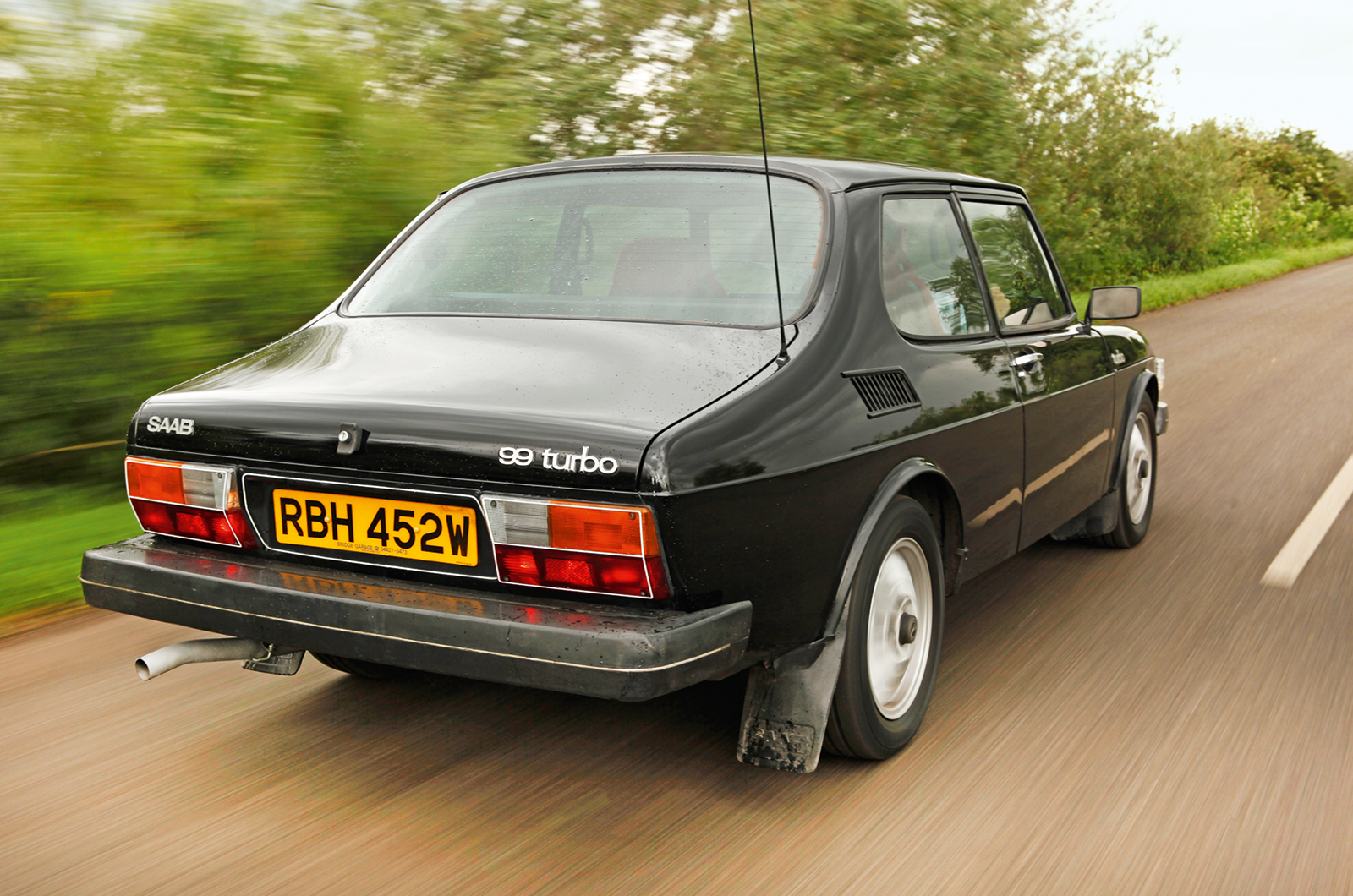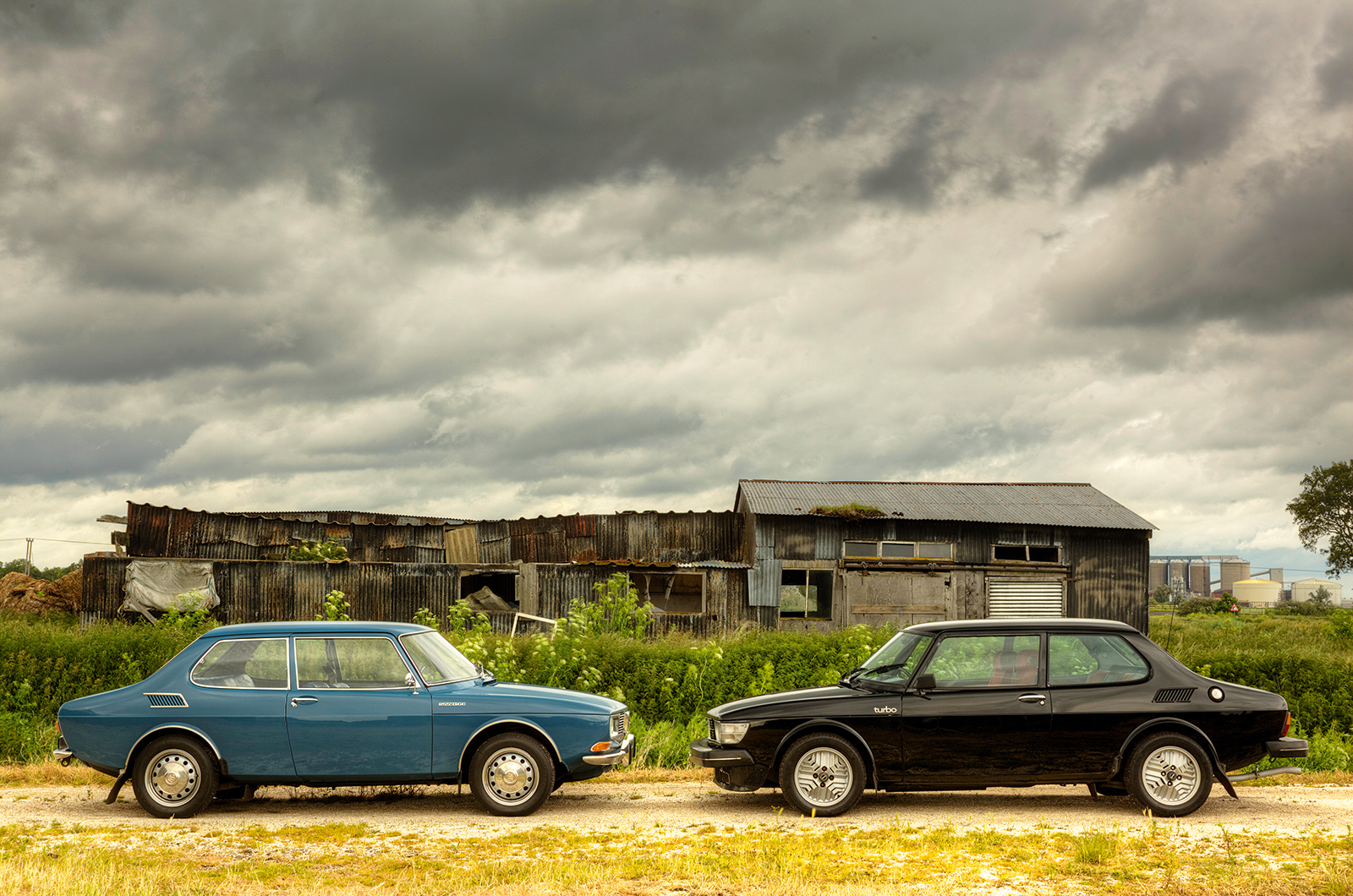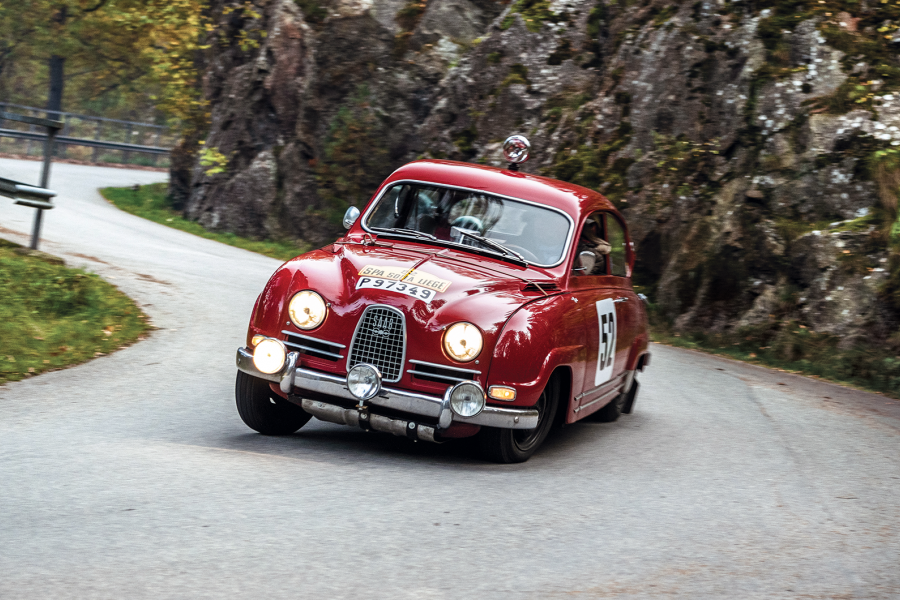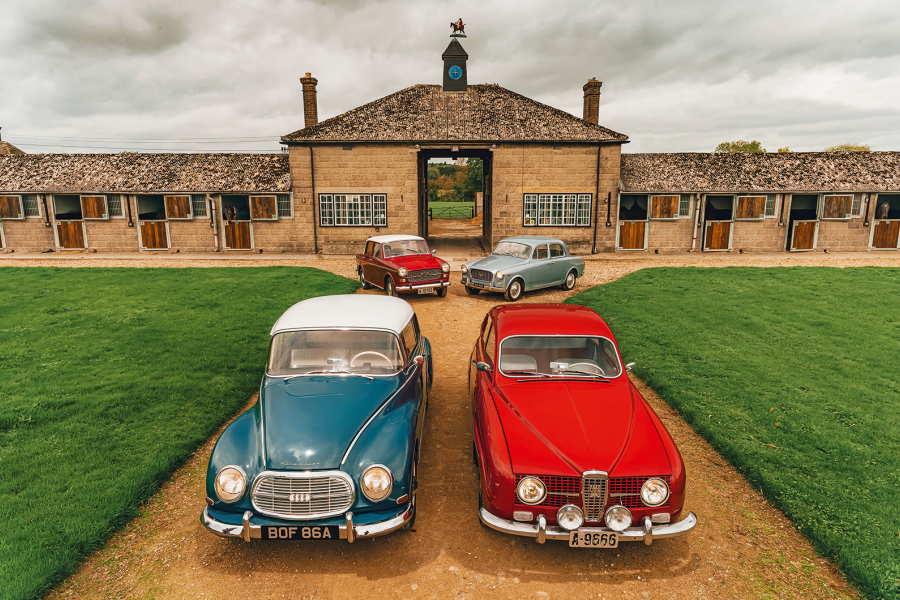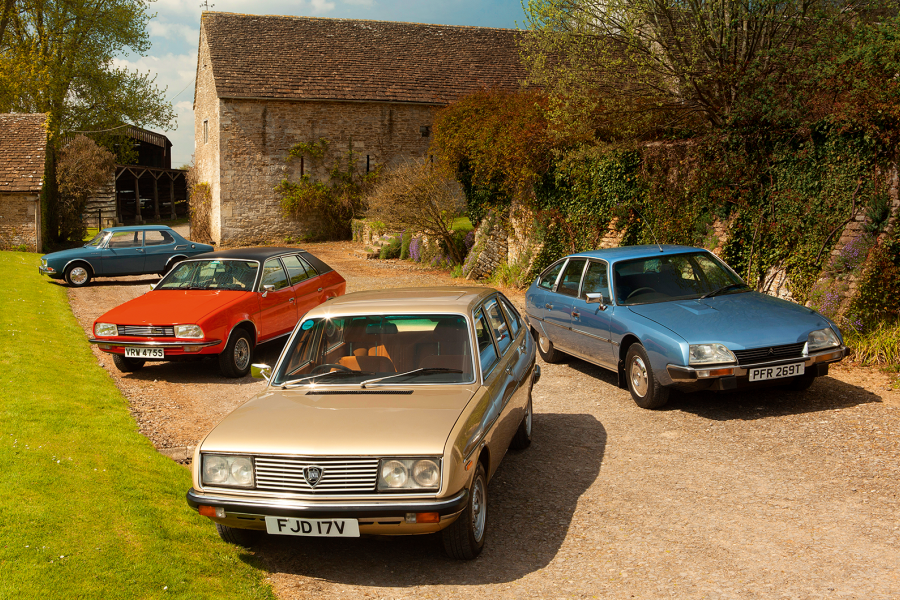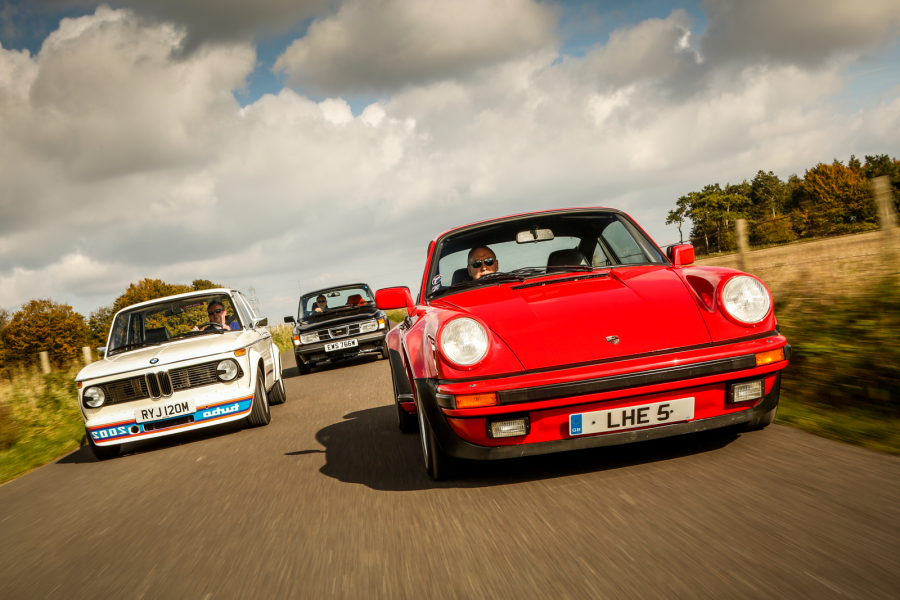Put another way, this can be a dual-mode car: you can roll along with the turbo just idling, or drop into third on the notchy four-speed gearbox, play the hooligan, and in comes the boost.
The 99 Turbo’s injected engine is tough
Drive aggressively and the payoff will inevitably be a healthy dose of torque-steer, but it’s more rewarding to work with the power delivery than against it.
You soon discover that there’s a sound chassis beneath, starting with the informative non-assisted steering, which has agreeable weighting, directness and a pleasant, well-oiled feel.
Pushed into corners the Turbo rolls moderately; the ride is generally comfortable, although it can become a little unsettled on undulating roads.
The brakes feel softer and more servoed than on the ‘1709’ but are admirably effective.
Saab’s 99 Turbo is good for 120mph and 0-60mph in 8.9 secs
In essence, the Turbo comes across as a more intelligent approach to creating a high-speed saloon.
At its launch, Saab claimed that on an average journey the turbocharger would only operate 15% of the time – but that, when it did, the performance was equal to that of a normally aspirated 3-litre car. Isn’t that a sensible way to have your cake and eat it?
That modest 1.7-litre ancestor was an equally intelligent way of doing a medium-sized family car.
Bluntly, it makes BL’s bigger front-drivers, the Maxi and 1800, seem half-baked – and that’s before one addresses the quality and reliability issues that so affected the British cars.
The evolution is clear to see
But most impressive is how the original 99 could seamlessly transmute into the Turbo, without getting out of its depth.
Can you imagine the Austin Maxi having evolved over nine years into a sporting, prestige BMW-eater?
Saab’s engineers might have had relatively limited resources, but they used them well, establishing with the 99 a gene pool from which they drew imaginatively for 40-odd years.
Images: Tony Baker
Thanks to Stuart Payne and Chris Foxley of the Saab Owners’ Club (GB)
This was in our November 2012 magazine; all information was correct at the date of original publication
READ MORE
Separated at birth: Saab 99 vs Triumph Dolomite
Wild bunch: Saab 99 vs Porsche 911 vs BMW 2002
From the left field: Citroën CX vs Lancia Beta vs Princess vs Saab 99
Jon Pressnell
Jon Pressnell is a contributor to Classic & Sports Car
